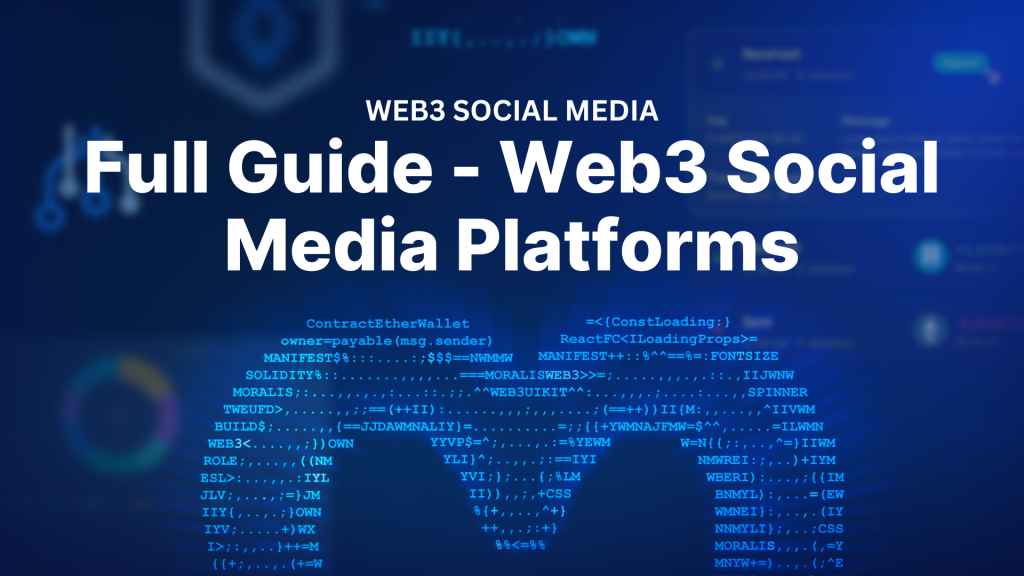
Web3 marks the next iteration of the internet, and with Web3’s paradigm shift, we see various industries integrate decentralized technologies such as blockchain networks, smart contracts, and cryptocurrencies. A great example is the social media sector. There, we see the emergence of a new, decentralized social media landscape, with numerous blockchain-based platforms launching daily. But what are Web3 social media apps? And how do they work? For the answers to these questions, join us in this article as we dive into the ins and outs of these new innovative platforms!
Overview
In today’s guide, we’ll kick things off by diving straight into the ins and outs of Web3 social media platforms. In doing so, we’ll explain what they are and cover some of the benefits of these decentralized applications (dapps). From there, we’ll jump straight into a list of Web3 social media apps, where we’ll cover five prominent examples. Lastly, for those interested in building their own platforms, we’re also going to briefly dive into Web3 social media platform development and introduce you to Moralis – the ultimate tool for anyone looking to build blockchain-based platforms!
Moralis is an industry-leading API provider, and with interfaces like our ETH API, you can seamlessly integrate the features needed to build sophisticated Web3 social media platforms. This includes everything from token-gating content to setting up real-time Web3 alert functionality and much more.

So, if you’re serious about building your own Web3 social media platforms, take this opportunity to sign up with Moralis for free!
Nevertheless, without further ado, let’s dive into the intricacies of Web3 social media platforms!
What are Web3 Social Media Platforms?
In short, Web3 social media platforms are websites or applications that leverage decentralized technologies. This includes blockchain networks, smart contracts, and cryptocurrencies. Furthermore, decentralized technologies provide an experience centered around privacy, security, and user control!
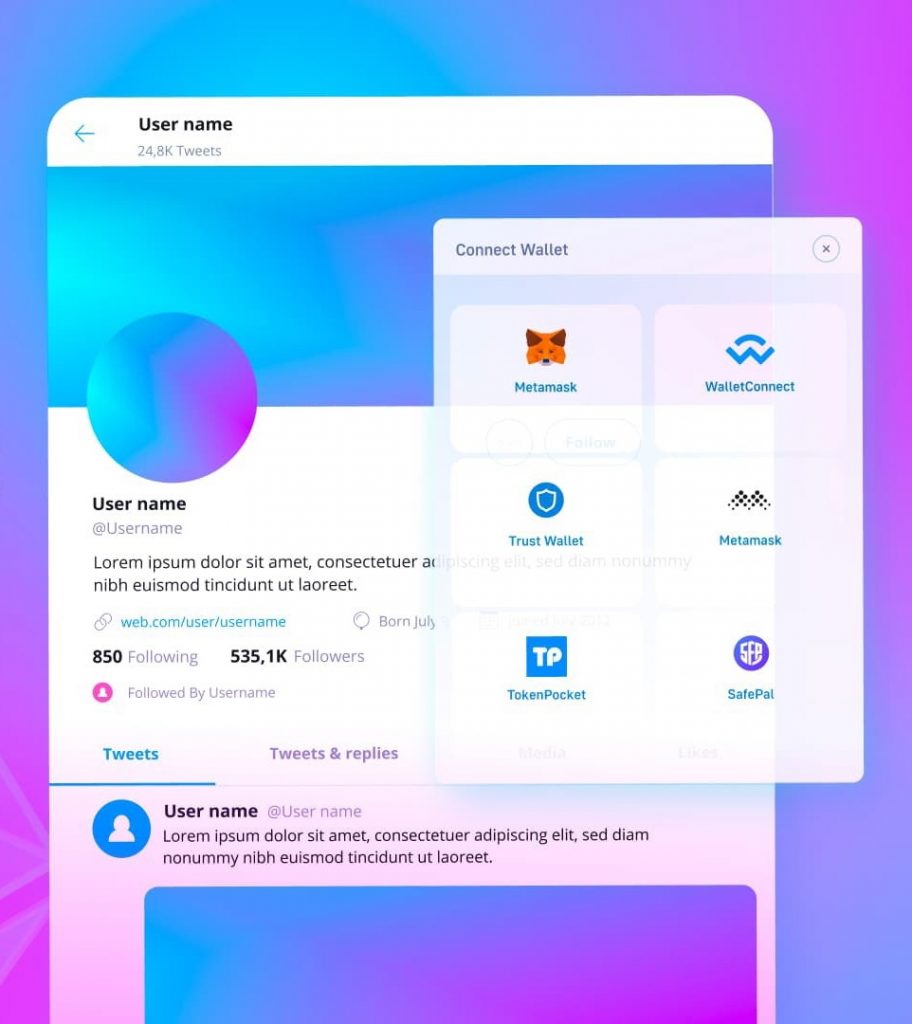
So, how exactly is this different from traditional social media platforms?
While conventional social media apps like Facebook, Instagram, and X run on centralized servers, Web3 platforms operate on blockchain networks like Ethereum, BNB Smart Chain (BSC), and Solana. Doing so makes these platforms decentralized and removes issues associated with single points of failure, censorship, central control, etc.
All in all, Web3 social media platforms are apps and websites that use blockchain networks, smart contracts, and other decentralized technologies to enhance privacy and security while giving users more control!
Nevertheless, to better understand these platforms, let’s take the following subsection to explore some benefits of Web3 social media!
Benefits of Web3 Social Media Platforms
Web3 social media apps have a lot of benefits compared to conventional platforms, and below, you’ll find four prominent examples:
- Ownership and User Privacy: In Web3 social media, users typically have complete ownership and autonomy over their personal information, content, and interactions. This significantly reduces the risk of data manipulation and exploitation.
- Decentralized Governance: Conventional social media applications are generally controlled by a centralized authority, giving rise to concerns related to censorship and bias. Web3 social media platforms, however, typically implement a decentralized governance model, empowering users to participate actively in shaping the platform’s policies and rules.
- Tokenized Economy: Web3 social media platforms typically leverage cryptocurrencies to incentivize content creation, curation, and engagement. This allows users to earn tokens for their contributions, fostering a more democratic ecosystem.
- Interoperability: The Web3 social media ecosystem aims to break down barriers between various dapps, allowing users to seamlessly interact and share content across multiple platforms.
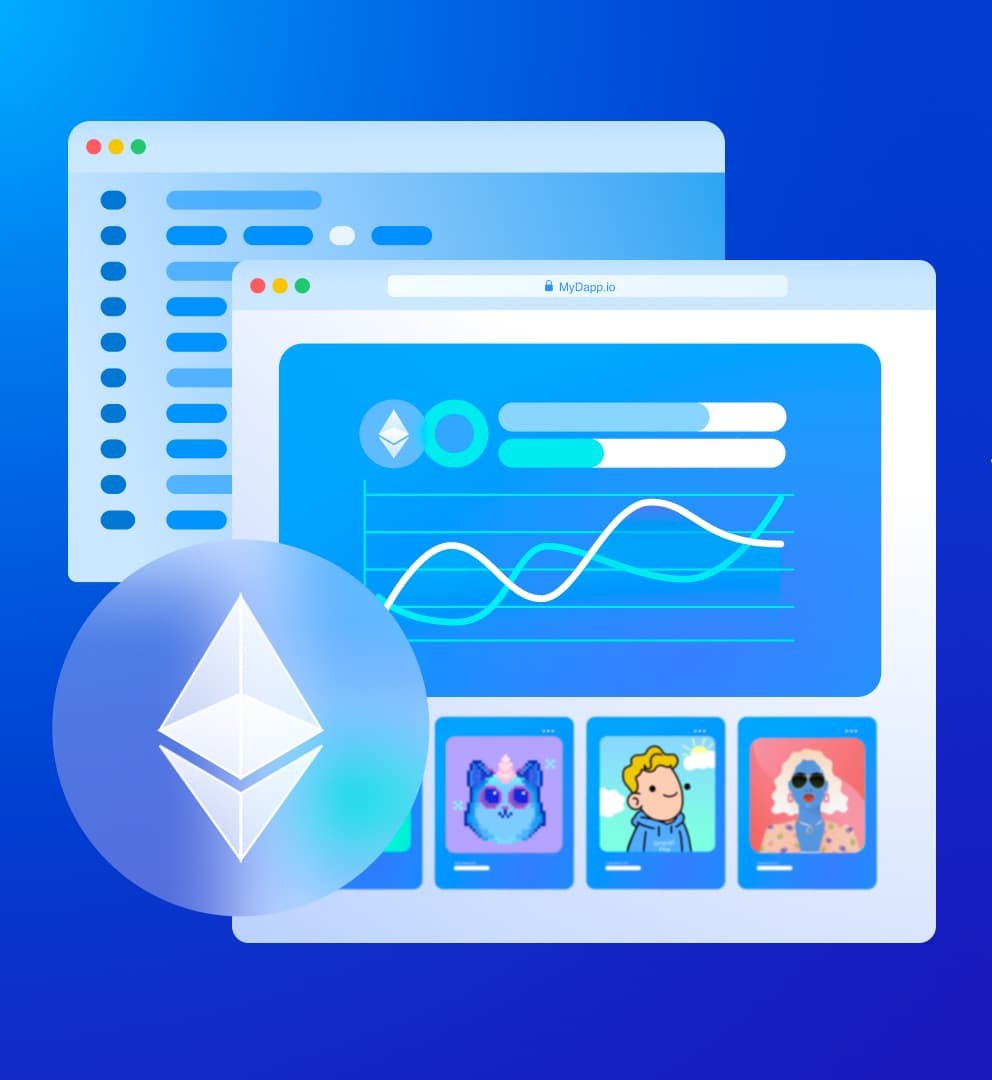
Now, with an overview of what Web3 social media platforms are, let’s explore some already existing websites and applications!
List of Web3 Social Media Platforms
There are many prominent Web3 social media platforms on the market, and we won’t be able to cover them all in this guide. Therefore, in the following subsections, we’ll explore a list of five popular and industry-leading Web3 social media platforms:
- Hey
- Minds
- Mirror
- Paragraph
- Continuum
However, the dapps above are only a few prominent examples. If you want to explore additional platforms, check out our top social media dapps page on Moralis’ dapp store page: Web3 Wiki!
Nonetheless, without further delay, let’s dive into the first Web3 social media platform on this list: Hey!
Hey
Hey (formerly known as Lenster) is a pioneering Web3 social media platform powered by Lens Protocol. It operates on the principles of composability, decentralization, and permissionlessness. Moreover, Hey offers an immersive experience for users to engage with the social network, and the platform’s user interface (UI) and functionality are similar to that of X!
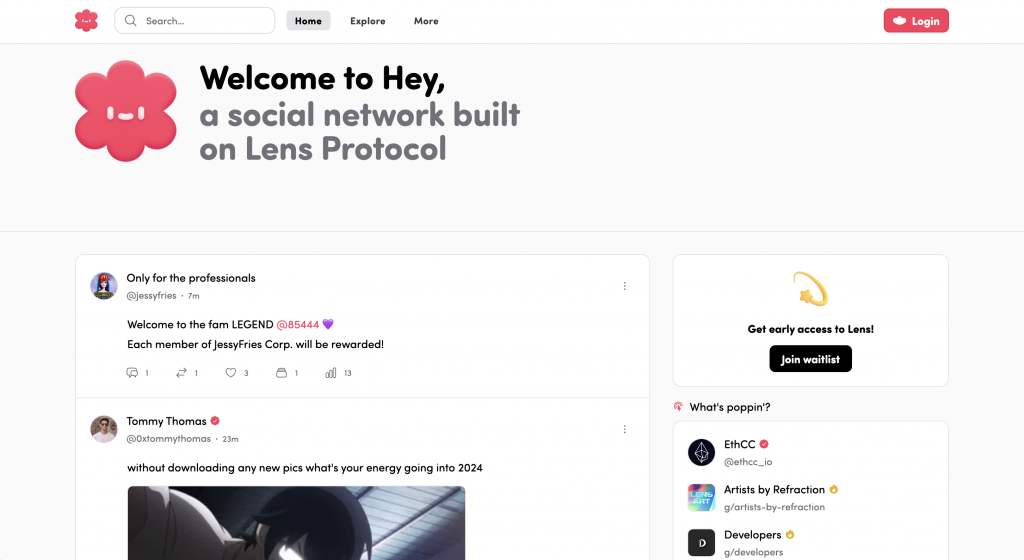
Hey offers many features common to social media platforms, like the functionality to create posts, follow profiles, leave comments, etc. However, in combination with this, the platform also provides additional support for fungible and non-fungible tokens (NFTs). As such, users can, for instance, token gate publications.
All in all, Hey is a Web3 social media platform providing functionality similar to X while operating on the core principles of decentralization and permissionlessness!
Minds
Minds is a decentralized, open-source alternative to X, focusing on privacy, free speech, and user empowerment. The platform provides a decentralized and encrypted network where users control their data and can earn rewards in the form of the platform’s native ERC-20 MINDS token in return for publishing content. This token has a lot of utility, allowing users to promote content, show appreciation for other users, and upgrade to a premium membership with Minds!
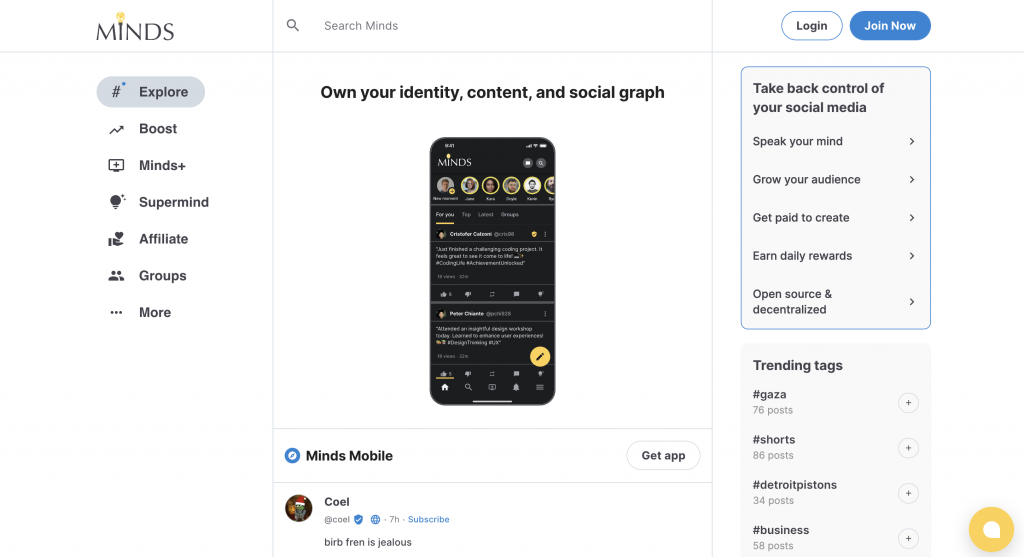
Overall, Minds is – much like Hey – a decentralized alternative to X where users can earn crypto tokens in return for publishing engaging content!
Mirror
Mirror was created in 2020, and it’s a decentralized platform providing a user-owned, blockchain-based network with the purpose of revolutionizing the way we express, share, and monetize thoughts online!
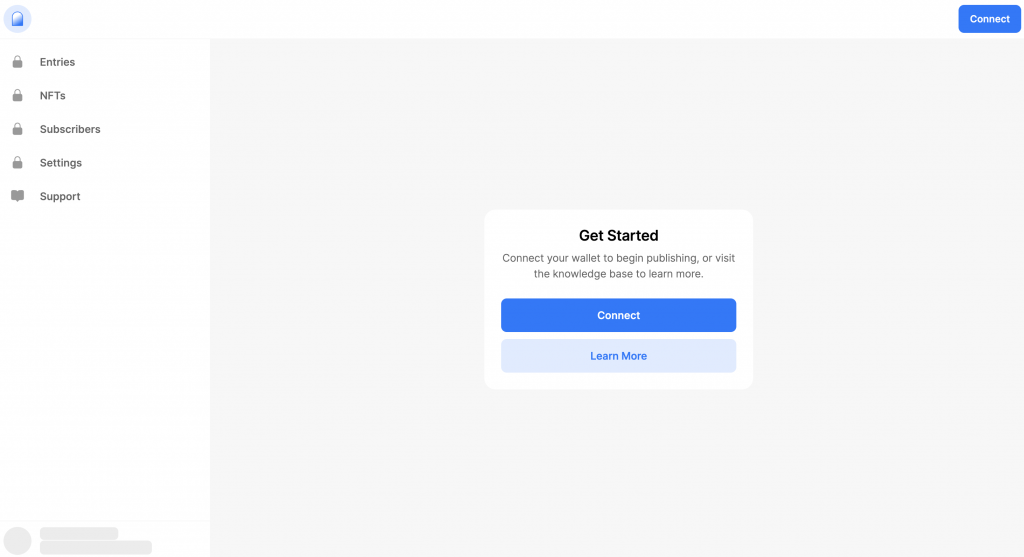
Moreover, Mirror has been regarded as the “Medium for Web3”, as the platform provides similar functionality. Consequently, with Mirror, it’s possible for anyone to create customized blog posts, giving users a venue to express their ideas in a unique and engaging manner.
All in all, Mirror is a decentralized Medium-like platform that revolutionizes how content is created and shared online!
Paragraph
Paragraph is a Web3-native publishing and newsletter platform providing creators with innovative and new ways to build communities, monetize their content, and connect with their audiences. Moreover, Paragraph delivers over one million newsletters monthly, has 10k+ creators, and 500k+ readers!
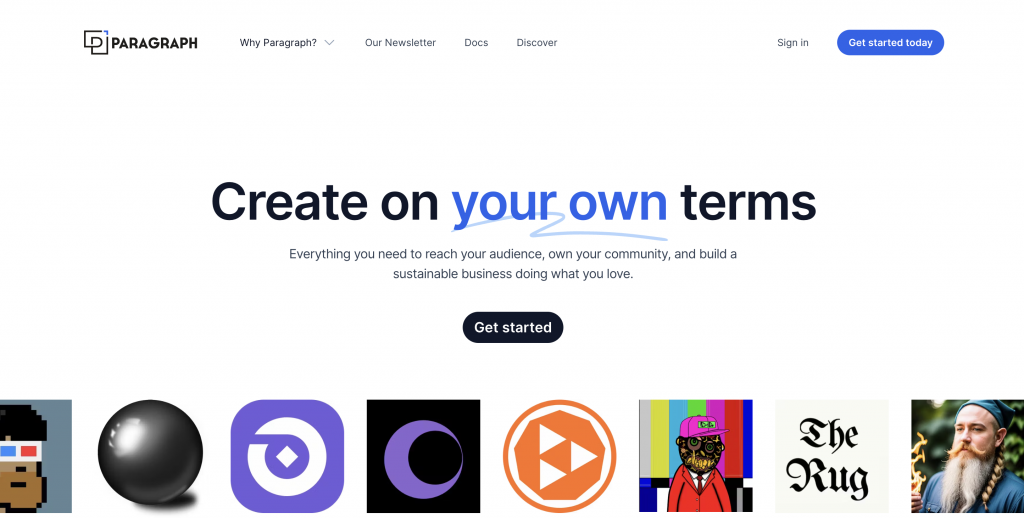
What’s more, Paragraph provides a wide range of features, allowing users to token-gate content, turn posts into collectible NFTs, unlock new monetization opportunities, and much more. With these features, it’s possible for users to grow their audience and cultivate a vibrant community around their work.
To summarize, Paragraph is a blockchain-based publishing and newsletter platform that gives users innovative ways to build communities, monetize their work, and connect with their audience!
Continuum
Continuum is an innovative Web3 social media platform empowering users to earn cryptocurrencies and NFTs while expanding their knowledge. The platform offers a fast and social way to learn with quizzes, short-form content, and a community of like-minded learners!
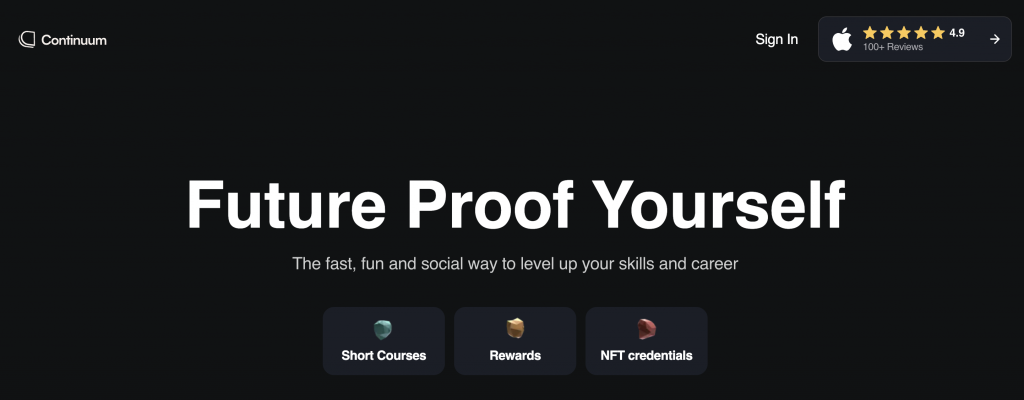
Moreover, Continuum’s mission is to revolutionize creative education by providing a community-owned platform that decentralizes education and provides creators with a way to financial freedom. And the platform boasts a global community of 32k+ users spanning 172 different countries worldwide.
All in all, Continuum provides a global platform that offers a unique experience where users can earn digital assets by simply engaging in educational activities!
Now, with an overview of what decentralized social media platforms are, you might be interested in building one yourself. If this is the case, join us in the following section as we introduce you to the industry’s premier tool for Web3 development: Moralis!!
Web3 Social Media Platform Development
Moralis is an industry-leading Web3 API provider, and with our premier interfaces, you can seamlessly build everything from crypto wallets to advanced Web3 social media platforms!

Our diverse and dynamic set of Web3 APIs provides everything you need to implement the features required to create sophisticated Web3 social media platforms. This includes everything from token-gating content to setting up Web3 alerts.
But why should you leverage Moralis when building dapps?
To answer this query, let’s explore three benefits of Moralis:
- Top Performance: Moralis’ Web3 APIs offer the industry’s best performance. It doesn’t matter if you want to measure by speed, reliability, or any other metric; Moralis always blows the competition out of the water.
- Unparalleled Scalability: All of Moralis’ Web3 APIs are built to scale. Consequently, when working with Moralis, you’ll never have to worry about performance, as our interfaces will have no trouble handling an increase in traffic as your projects grow.
- Cross-Chain Compatability: Our Web3 APIs are chain-agnostic, supporting all the biggest blockchains, including Ethereum, Solana, BSC, Polygon, and many others. Consequently, you can effortlessly build cross-chain compatible Web3 social media platforms when using Moralis.

Nevertheless, that gives you an overview of why you should leverage Moralis. In the following subsections, we’ll dive deeper into Moralis’ suite and explore three prominent APIs!
Wallet API
The Wallet API is the ultimate tool for anyone looking to integrate wallet functionality into their dapps. This premier interface allows you to seamlessly fetch and integrate wallet balances, transactions, profile data, etc. What’s more, you can do so with single lines of code! Also, the Wallet API supports over 500 million addresses across all major EVM chains!
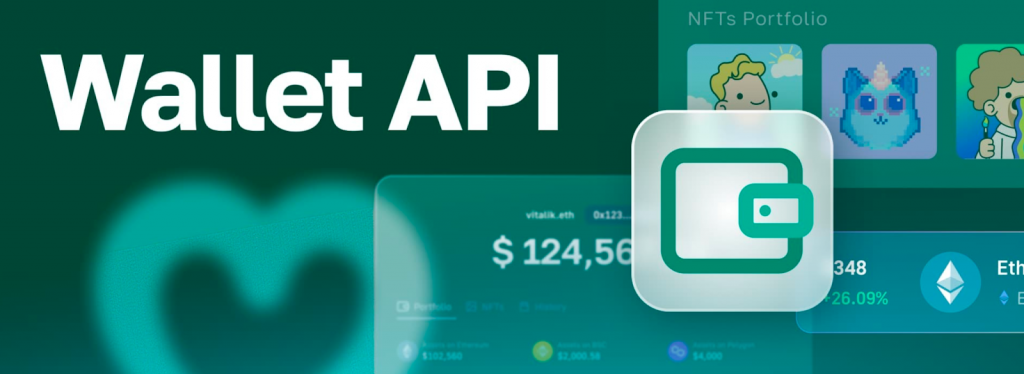
So, how does the Wallet API work?
Well, to highlight the accessibility of this industry-leading tool, here are three examples of prominent endpoints you’ll likely find useful:
getNativeBalance()– Fetch the native balance of any Web3 wallet:
const response = await Moralis.EvmApi.balance.getNativeBalance({
"chain": "0x1",
"address": "0xDC24316b9AE028F1497c275EB9192a3Ea0f67022"
});
getWalletNFTs()– Query all NFTs held by a wallet:
const response = await Moralis.EvmApi.nft.getWalletNFTs({
"chain": "0x1",
"address": "0xff3879b8a363aed92a6eaba8f61f1a96a9ec3c1e"
});
getWalletTransactions()– Get all native transactions of any wallet:
const response = await Moralis.EvmApi.transaction.getWalletTransactions({
"chain": "0x1",
"address": "0x1f9090aaE28b8a3dCeaDf281B0F12828e676c326"
});
Check out our official Wallet API documentation page to learn more about this interface!
NFT API
Moralis’ NFT API is the ultimate tool for NFT data. With this premier interface, you can effortlessly query NFTs, metadata, transactions, prices, and much more from all major blockchain networks. In fact, the NFT API supports 3+ million NFT collections, including everything from well-established projects like Pudgy Penguins to tokens that dropped just seconds ago!
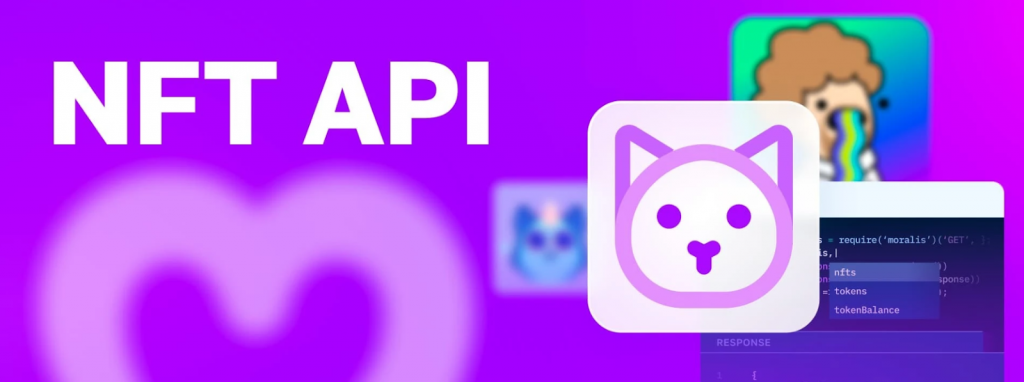
But how does Moralis’ NFT API work?
To give you a little sneak peek, here are three endpoint examples:
getNFTMetadata()– Get the metadata of any NFT:
const response = await Moralis.EvmApi.nft.getNFTMetadata({
"chain": "0x1",
"address": "0xb47e3cd837dDF8e4c57F05d70Ab865de6e193BBB",
"tokenId": "1"
});
getNFTContractTransfers()– Query all transactions of a given NFT contract:
const response = await Moralis.EvmApi.nft.getNFTContractTransfers({
"chain": "0x1",
"address": "0xb47e3cd837dDF8e4c57F05d70Ab865de6e193BBB"
});
getNFTLowestPrice()– Fetch the lowest sold-for price of any NFT contract:
const response = await Moralis.EvmApi.nft.getNFTLowestPrice({
"chain": "0x1",
"address": "0xBC4CA0EdA7647A8aB7C2061c2E118A18a936f13D"
});
To learn more about this tool, check out the official NFT API documentation page!
Streams API
The Streams API is the perfect tool for adding Web3 alert and notification functionality into your dapps. With only a few lines of code, you can effortlessly set up your own streams to get real-time updates sent directly to the backend of your Web3 projects via webhooks!
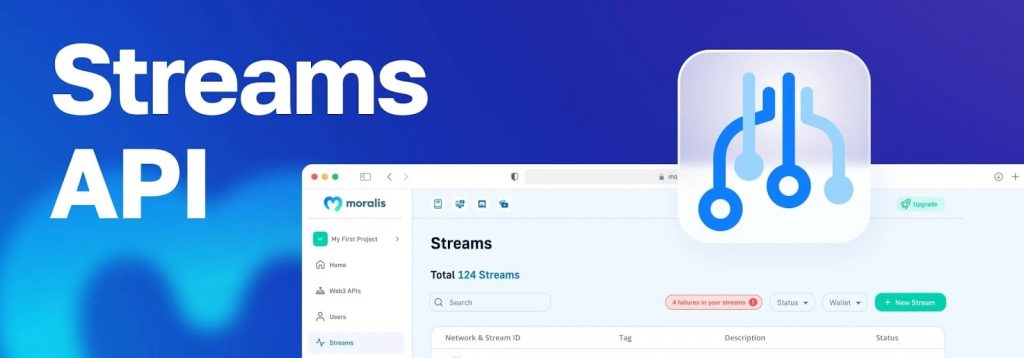
So, how does the Streams API work?
Well, you can set up a stream in three simple steps:
1. Configure your stream by specifying the chains you want to monitor, what events you wish to listen to, and add a webhook destination:
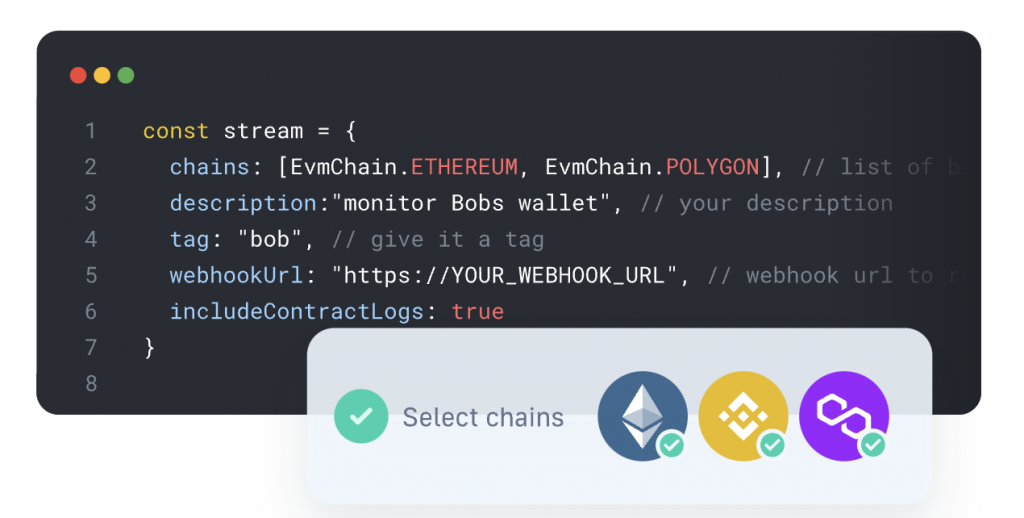
2. Set up your stream and get a test webhook in return:
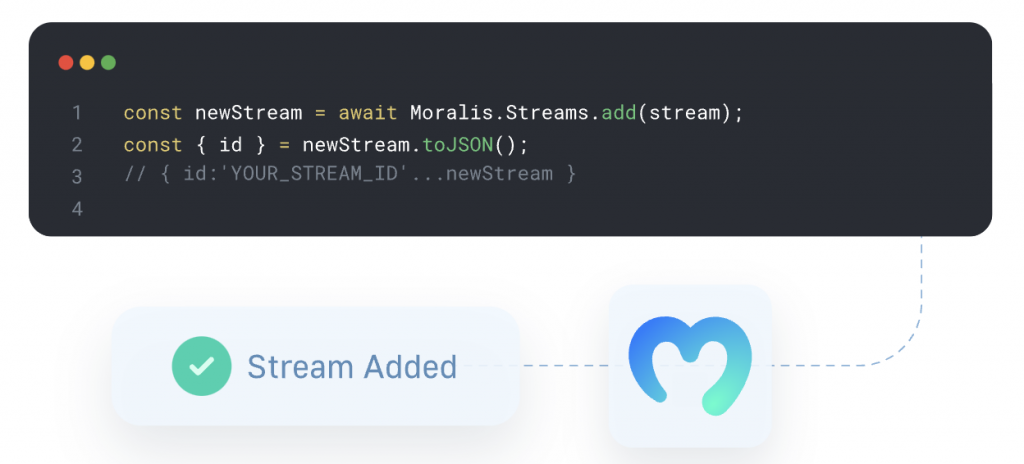
3. Add the addresses you wish to monitor and see the data stream in:
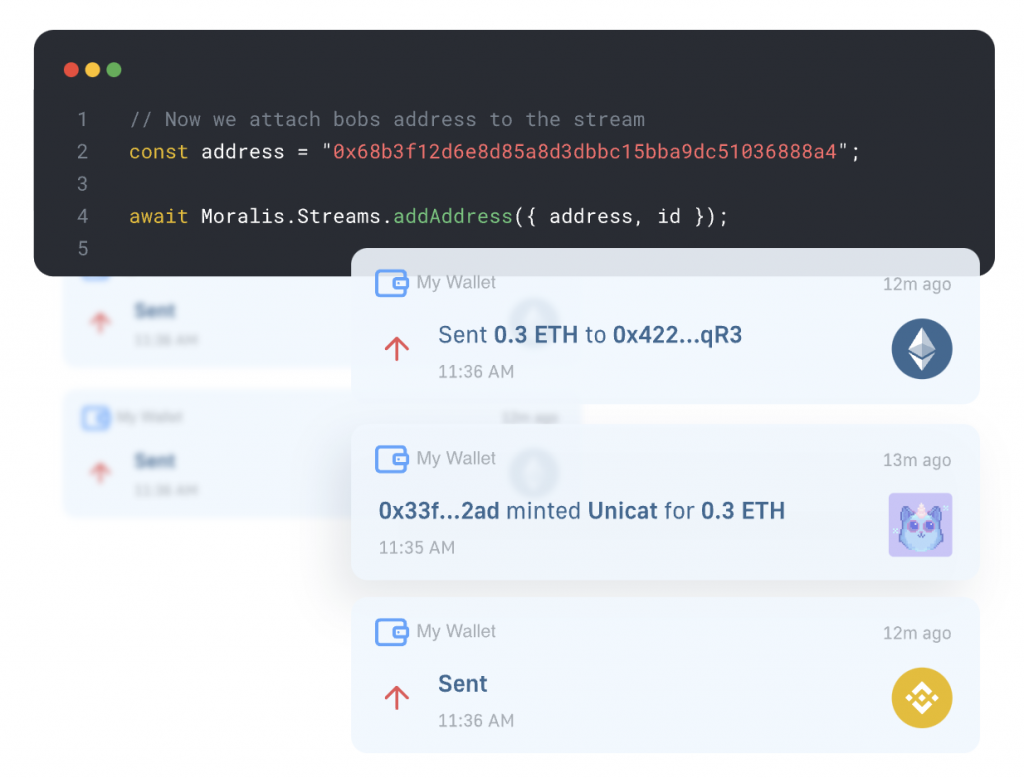
Check out our official Streams API documentation page for a more in-depth explanation of how this works!
Also, if you wish to explore all of our industry-leading interfaces, check out our Web3 API page!
Summary: Web3 Social Media Platforms Explained
In today’s article, we kicked things off by exploring the ins and outs of Web3 social media platforms. In doing so, we learned that they are social media apps leveraging decentralized technologies such as blockchains, smart contracts, and cryptocurrencies to provide an experience centered around privacy, security, and user control.
From there, we dove into five prominent examples of decentralized social media platforms:
- Hey
- Minds
- Mirror
- Paragraph
- Continuum
To top things off, we also introduced you to Moralis. Moralis is the ultimate tool for anyone looking to get into Web3 social media development!
If you liked this article, consider reading more guides here on the Moralis blog. For instance, check out our ETH gas tracker guide or read about the data availability layer in crypto.
Also, if you’re serious about building a Web3 social media platform yourself, don’t forget to sign up with Moralis. You can create your account for free, and you’ll be able to immediately start building dapps faster and more efficiently!
